A ROLLS-ROYCE EXHIBITION WILL BE AT BONHAMS
5 July 2017, Goodwood – Today, Rolls-Royce has announced the Mayfair location for ‘The Great Eight Phantoms’ – A Rolls-Royce Exhibition. The exhibition will take place at Bonhams on Bond Street, London, the heart of the luxury world. Rolls-Royce also announced that the third Great Phantom to join the exhibition will be Sir Malcolm Campbell’s Phantom II Continental.
29 JULY – 2 AUGUST 2017
10:00 – 17:00 BST
BONHAMS, 101 NEW BOND STREET, LONDON, W1S 1SR
MALCOLM CAMPBELL PHANTOM II
1933 ROLLS-ROYCE 40/50HP PHANTOM II CONTINENTAL TOURING SALOON
COACHWORK BY BARKER & CO.

Need for speed: Sir Malcolm Campbell’s Phantom II
At the height of his pursuit of a new land speed record in the 1930’s, Sir Malcolm Campbell began a relationship with Rolls-Royce that would take him to glory and help him celebrate it.
At the end of 1932 Campbell had won prestigious Grand Prix races, broken the land speed world record not once but six times, and had been knighted by King George V. He had nothing left to prove. He was the fastest man on land and yet, as restless as ever, he wanted to take a crack at the 300mph barrier, the automotive equivalent of the four-minute mile. He believed that the only engine that could power his Blue Bird to this speed was a 36.5L Rolls-Royce R aero engine, which generated a staggering 2,300 horsepower.
On 22 February 1933, Blue Bird’s first run with the Rolls-Royce engine set a new world land speed record of 272 miles per hour (438 km/h) at Daytona Beach, Florida. A month later, Campbell celebrated by taking personal delivery of a new Phantom II Continental, registration AGO 1.
The short-wheelbase Continental had been introduced in 1930 as a ‘sportier’ version of the Phantom II, which had debuted a year earlier. The Continental, with its improved balance and springing, was capable of 95mph – modest by Campbell’s standards, but positively head-spinning for a car weighing almost two and a half tons.
The Motor magazine commented that the Phantom II Continental was ‘Powerful, docile, delightfully easy to control and a thoroughbred, it behaves in a manner which is difficult to convey without seeming to over-praise.”
Although AGO 1 was bodied by coachbuilders Barker as a ‘standardised touring saloon’, there were some Bespoke modifications ordered by Campbell. These included a wireless set, fire extinguisher, spotlight, an exhaust pipe specified as nine-inches longer than the norm (probably to create an exhaust note closer to the Blue Bird’s roar), a klaxon horn, a Bosch horn and a siren. Clearly this king of speed wanted people to know he was coming through! Even on public roads, Campbell’s fondness for going fast was well known.
And the colour? Pale blue, of course, with darker blue leather trim and a black roof. The pearlescent glow of the bodywork was apparently achieved by Rolls-Royce’s use of ground herring scales in the paint. Campbell must have been pleased, for he penned a promotional brochure for the Phantom II entitled ‘The best Rolls-Royce yet produced,’
Bonhams and the Rolls-Royce marque have long been entwined, with some of the most historically significant and luxurious models crossing the block at the international auction house’s sales over the years. Indeed, Bonhams hold the world-auction record for the marque with the sale of ‘The Corgi’ 1912 Silver Ghost at £4,705,000 in 2012.
The Silver Ghost was in production until 1925 and replaced by another legendary model, the New Phantom. In December 2016, Bonhams sold one of the most famous Rolls-Royce Phantoms ever built – the 1926 Rolls-Royce Phantom I, nicknamed ‘The Phantom of Love,’ which sold for £561,500 at the Bond Street Sale. Commissioned by Clarence Warren Gasque for his wife Maude, a Woolworth heiress, money was no object. Gasque demanded that the style be French and that the car surpass the luxury of any previous Rolls-Royce sold. He certainly had his way, as the car’s painted ceiling, elegant polished satinwood, drinks cabinet, ormolu clock and self-styled coat of arms affixed to the doors combined to create a vehicle more akin to the throne room of Versailles than a motor car. It is, without doubt, one of the very finest examples of art and craftsmanship applied to an automobile, and encapsulates the elegance and style that has come to embody Rolls-Royce.
James Knight, Group Motoring Chairman of Bonhams, commented, ‘‘We are delighted to be the venue for this singular celebration of the Rolls-Royce Phantom, as Bonhams has had a long history with Rolls-Royce. Bonhams has sold some of the most astounding Rolls-Royce motor cars ever created, including ‘The Phantom of Love’ sold in London earlier this year, The ex-Marlene Dietrich Phantom I ‘ and the ex-Jack L. Warner Phantom I Transformal Phaeton.”
‘The Great Eight Phantoms’, a Rolls-Royce Exhibition, will take place at Bonhams international flagship saleroom and galleries in New Bond Street, London from 29 July till 2 August.
THE FRED ASTAIRE PHANTOM I
1927 ROLLS-ROYCE PHANTOM I TOWN CAR (SINGLE CABRIOLET)
COACHWORK BY HOOPER OF LONDON AND INSKIP OF NEWYORK
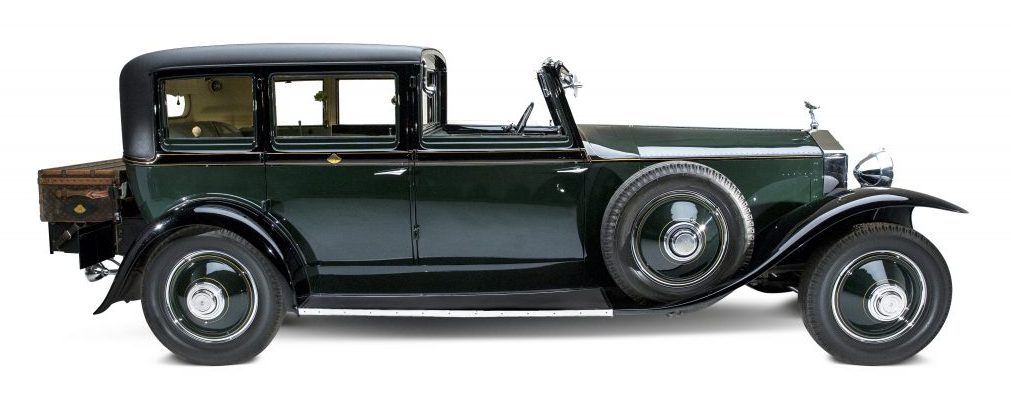
Developed in great secrecy, Phantom I was revealed in 1925 and proved an instant success. With its all-new 7.6-litre, straight-six engine, Phantom eclipsed all rivals for speed, power and reliability, and immediately secured its status as ‘The Best Car in the World’. This priceless example, on loan to the Exhibition from the Petersen Automotive Museum in Los Angeles, was originally owned by the American dancer, singer and actor Fred Astaire (1899-1987). Coachbuilders, Inskip of New York, added bespoke door handles, rear indicators and other features inspired by the Art Deco style, while the motoring trunk, an extremely rare piece handmade by Louis Vuitton, contained Fred’s trademark top hat, white bow tie and dancing shoes.
In a career spanning seven decades and more than 30 films, Astaire became one of Hollywood’s most beloved and enduring stars. As a dancer, notably with partner Ginger Rogers, Astaire achieved a grace and perfection that changed musical cinema – just as Phantom would became the standard by which all other motor cars were judged.
The car has been generously loaned to the Exhibition by the Petersen Automotive Museum, Los Angeles.
THE JOHN LENNON PHANTOM V
1965 ROLLS-ROYCE PHANTOM V

In their brief but world-changing career, The Beatles reinvented themselves many times. So it’s fitting that the Phantom V owned by John Lennon was not always as it appears today in the Exhibition. In fact, when he took delivery of it on 3 June 1965, it was finished in restrained, respectable Valentine Black. But as he later admitted, Lennon had always wanted to be an eccentric millionaire. With his PhantomV, he realised that dream in full. Taking full advantage of the marque’s bespoke capabilities, Lennon had the car customised in true rock-star style, complete with television, telephone, refrigerator, record player – even a double bed in place of the rear seat. In April 1967, Lennon asked coachbuilders JP Fallon to repaint the car, in time for the worldwide release of the newly-minted Sgt. Pepper’s Lonely Hearts Club Band on 1 June. Frequently described as ‘psychedelic’, the design is no random swirl, but actually a carefully-constructed floral Romany scroll, as seen on traditional narrowboats and gypsy caravans, with a zodiac symbol on the roof. When Lennon moved to the USA in 1970, the car went with him, and was loaned out to other rock stars including The Rolling Stones, Bob Dylan and The Moody Blues. In 1977, it was donated by billionaire Jim Pattison to the Royal British Columbia Museum in Canada.
The car has been generously loaned to the Exhibition by the Royal British Columbia Museum.
THE FIELD MARSHAL MONTGOMERY PHANTOM III
1936 ROLLS-ROYCE PHANTOM III
COACHWORK BY HJ MULLINER
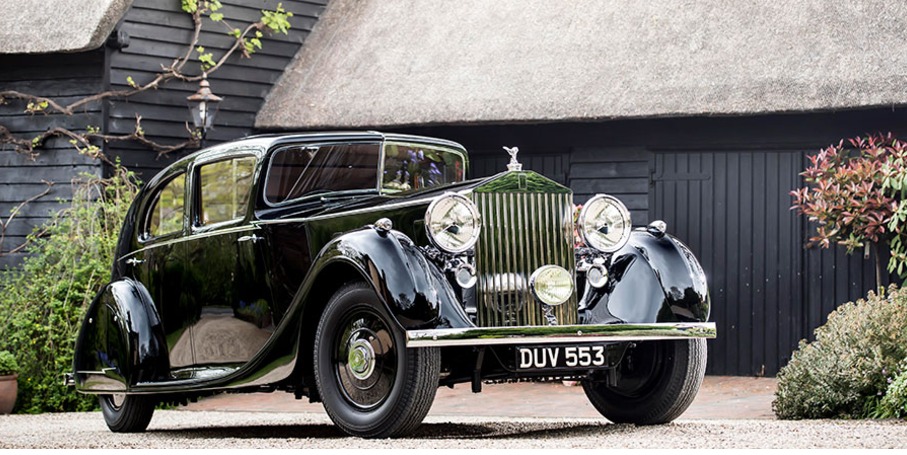
ROLLS-ROYCE ANNOUNCES ‘FIELD MARSHAL MONTGOMERY’S PHANTOM III’ AS THE SECOND GREAT PHANTOM TO JOIN THE EXHIBITION
At the end of July, ‘The Great Eight Phantoms’, a Rolls-Royce Exhibition, will gather together the greatest Phantoms from the last 92 years in Mayfair, London. The Exhibition will also welcome the next generation of this most celebrated luxury item, the new eighth generation Phantom. In the lead up to the opening of the Exhibition, Rolls-Royce is announcing which Great Phantoms will journey to London from around the world, telling the stories of these motor cars, their fabled owners and the historical events they witnessed. It is with great pleasure that the marque announces today that the Rolls-Royce Phantom III of British Field Marshal Bernard Law Montgomery, 1st Viscount Montgomery of Alamein will join the Exhibition.
Monty’s Triple
Although Field Marshal Bernard Law Montgomery, 1st Viscount Montgomery of Alamein was nicknamed the Spartan General due to his ascetic lifestyle, there was one area in which he demanded the very best – his personal transport. And his preference was for Rolls-Royce.
During World War Two, the Field Marshal had the use of three Rolls-Royce Phantom IIIs.
The first of the Phantoms, a 1936 model coachbuilt by Freestone & Webb, was owned by the head of English Talbot Motor Company, Frederick Wilcock, before being requisitioned by the Ministry of War Transport Section. Montgomery used it as his personal transport in the run up to D-Day, and ferried Winston Churchill, General Eisenhower and King George VI to D-Day planning sessions at his base in Southwick House, Hampshire.
A keen believer in the power of the image, Montgomery used his Rolls-Royce Phantom to communicate permanence, solidity and reliability – a signal to his men that he was there to stay.
But it is the ‘Butler’ Phantom III, which will be present at the Exhibition in London, which proved to be Montgomery’s favourite. This particular Phantom was commissioned for Alan Samuel Butler, Chairman of the De Havilland Aircraft Company, with bodywork by HJ Mulliner of Chiswick. Its most striking feature was a front-sloping windscreen that made the car 15 per cent more aerodynamically efficient than the standard configuration. The motor car’s slippery nature was also helped by the enclosed spare tyre and swept tail.
The ‘Butler’ Phantom III was Montgomery’s main official mode of transport for many years visiting such eminent addresses as 10 Downing Street, the War Office on Whitehall, the British Prime Minister’s country residence Chequers, and military operations centres such as Northwood in Hertfordshire and the NATO Supreme Headquarters Allied Powers-Europe in Rocquencourt, near Versailles, France.
The Field Marshal kept the ‘Butler’ Phantom until 1962, by which time it had also carried the Prime Ministers of Canada, Australia and New Zealand, as well as taking Monty around the UK to historic meetings, inspections and celebrations.
The ‘Butler’ Phantom III has recently undergone extensive refurbishment at Rolls-Royce specialist P&A Wood in Essex, England.
‘The Great Eight Phantoms’ Exhibition will be the first and only opportunity for members of the public to see this amazing Rolls-Royce before it attends the Pebble Beach Concours d’Elegance in the United States in August, after which it will return to its current owner’s private collection.
‘The Great Eight Phantoms’, a Rolls-Royce Exhibition, will take place in Mayfair, London, at the end of July this year.
QUEEN ELIZABETH II’S PHANTOM VI
1977 ROLLS-ROYCE PHANTOM VI
COACHWORK BY MULLINER PARK WARD
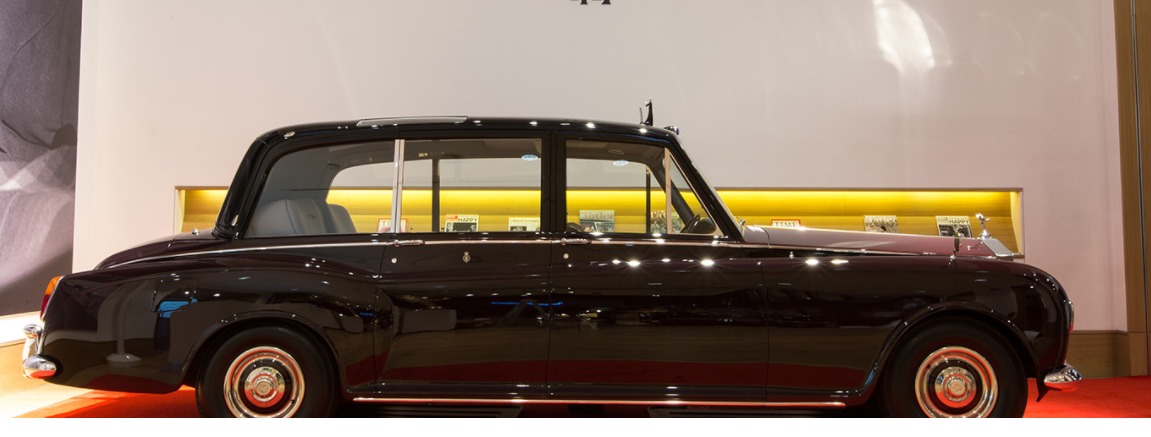
The British Royal Family was an early adopter of the ‘finest cars in the world’: Edward VIII bought his first Rolls-Royce in 1919 and went on to own a further nine. The connection strengthened further in 1950 when the then Princess Elizabeth and Prince Philip took delivery of the first Phantom IV just after their marriage. Twenty-seven years later, to celebrate The Queen’s Silver Jubilee year, this PhantomVI was presented to Her Majesty, and served as her principal state car until 1992. It made a memorable reappearance in 2011, when it brought Kate Middleton and her father to Westminster Abbey for her marriage to Prince William.
The car is custom-built, with a number of features specially designed for its unique role. As part of the royal fleet, it’s finished in Royal Claret Livery and does not require a registration plate. When The Queen was aboard, the Spirit of Ecstasy was replaced by the royal mascot: a fitment over the windscreen held her personal silver coat-of-arms and flag. The raised roofline accommodates an enormous expanse of toughened glass, enabling The Queen to see and be seen by the crowds lining her route.
Her Majesty Queen Elizabeth II has graciously assented to her PhantomVI State Limousine being present at‘The Great Eight Phantoms’ – A Rolls-Royce Exhibition – for the British public to see.

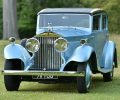
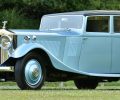
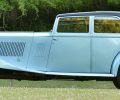
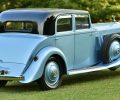

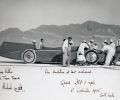

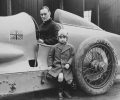



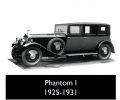

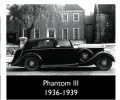
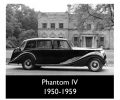
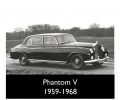

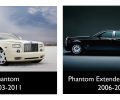

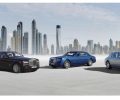
You must be logged in to post a comment.